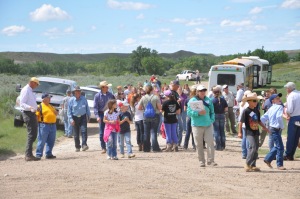Bair Ranch Foundation Seminar Dates Announced
The Bair Ranch Foundation Seminar Dates have been announced.
The very first seminar of The Bair Ranch Foundation Seminar Series is next week, Wednesday, September 19th. Vince Smith will give two seminars, a research/technical seminar at Noon in ABB 134 and a Community Talk at 6:00 pm in ABB 134.
There will be a reception starting at 5:30 pm in the Atrium before the Community Talk, everyone is invited. Please share with anyone you think might like to attend.
If you have any questions please contact Carl Yeoman ([email protected]) or Lance McNew ([email protected]).
Bair Ranch Foundation Seminar Series – Fall Semester 2018
Wednesday, September 19:
MSU Seminar @ Noon in ABB 134
Vince Smith, Professor, Department of Agricultural Economics and Economics, Montana State University
“Food Aid Cargo Preference: Costs, Benefits and Implications for US Humanitarian Aid Efforts”
Community Talk @ 6:00 pm in ABB 134
Vince Smith, Professor, Department of Agricultural Economics and Economics, Montana State University
“US Agricultural Policy: Where Have We Been and Where Are We Going?”
Wednesday, October 3:
MSU Seminar @ Noon in ABB 134
Kevin Ellison, Grasslands Ecologist, Northern Great Plains, World Wildlife Fund
“Landscape Scale Interactions between Birds and Agriculture”
Wednesday, October 17:
MSU Seminar @ Noon in ABB 134
Amilton de Mello, Ph.D., Nevada Meat Science Lab, University of Nevada – Reno
“Beef Industry in the U.S. – Challenges and Perspectives”
Community Talk @ 6:00 pm in ABB 134
Amilton de Mello, Ph.D., Nevada Meat Science Lab, University of Nevada – Reno
“Beef Industry in the U.S. – Challenges and Perspectives”
Wednesday, October 31:
MSU Seminar @ Noon in ABB 134
Matthew Cronin, Scientist with Northwest Biology Company
“Population Genetics of Wildlife and Livestock”
Wednesday, November 14:
MSU Seminar @ Noon in ABB 134
Matthew Spangler, Professor, Beef Genetics Specialist, University of Nebraska – Lincoln
“Genetic Selection of Livestock: Why it Matters to You”
Community Talk @ 6:00 pm in ABB 134
Matthew Spangler, Professor, Beef Genetics Specialist, University of Nebraska – Lincoln
“Genetic Selection of Livestock: Why it Matters to You”




 The
The 


 Beef Checkoff dollars help fund the
Beef Checkoff dollars help fund the  Checkoff dollars help spread the message and tell our story throughout the state of Montana. In 2014 we told the BQA story across the state to rancher-attended seminars and conventions, livestock auction barn audiences, 4-H Clubs, FFA Chapters and Conventions, VoAg Instructor groups, Facebook posts and email news blasts to greatly increase the numbers of Montana stakeholders registering for and completing online BQA certification.
Checkoff dollars help spread the message and tell our story throughout the state of Montana. In 2014 we told the BQA story across the state to rancher-attended seminars and conventions, livestock auction barn audiences, 4-H Clubs, FFA Chapters and Conventions, VoAg Instructor groups, Facebook posts and email news blasts to greatly increase the numbers of Montana stakeholders registering for and completing online BQA certification.









